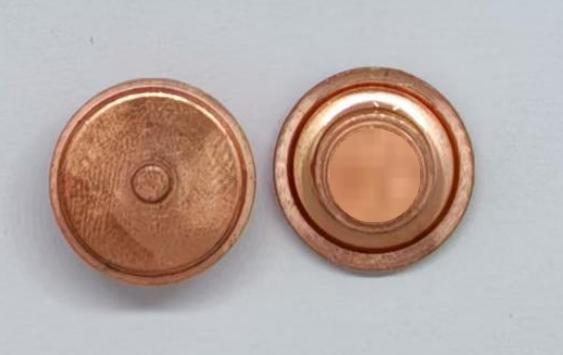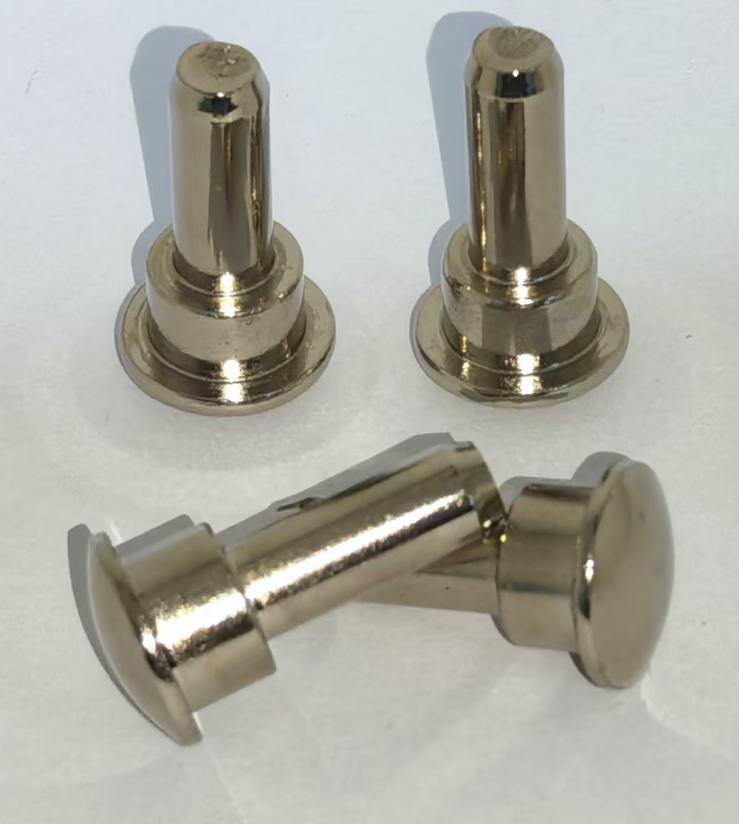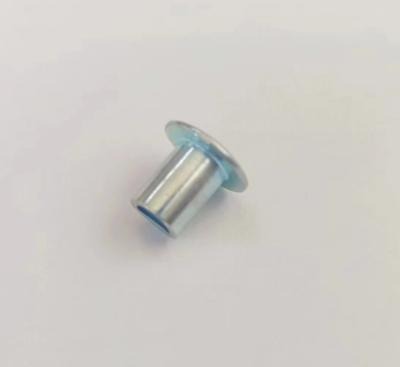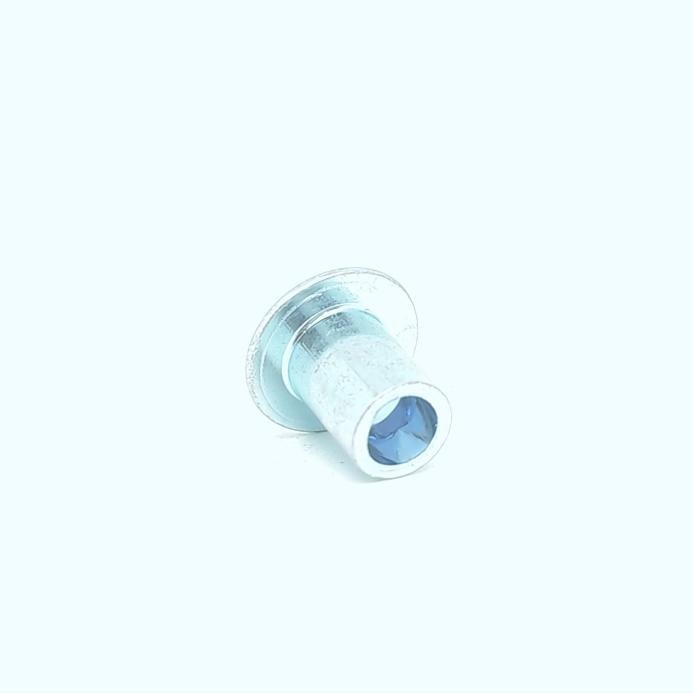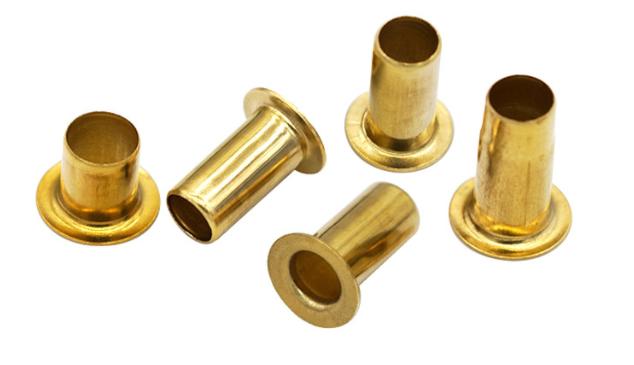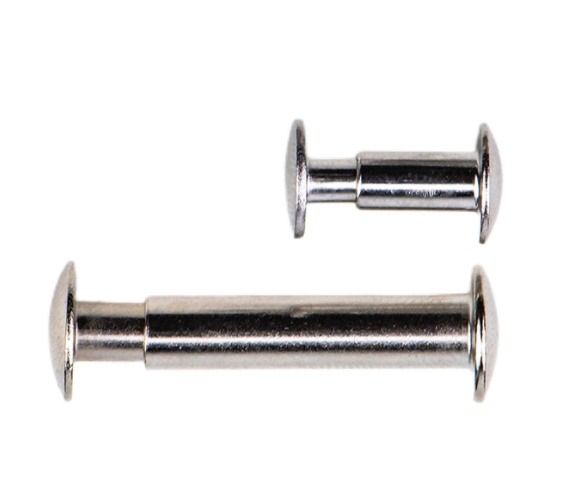Understanding Male and Female Rivets: Selecting the Right Type for Specific Needs
Rivets are fundamental components in mechanical engineering, serving as reliable fasteners for joining various materials. Among the different types of rivets, male and female rivets play crucial roles in ensuring secure and stable connections between parts. This article provides an in-depth exploration of male and female rivets, including their definitions, key considerations for their use, material choices, standard sizes, market availability, and application across various industries.
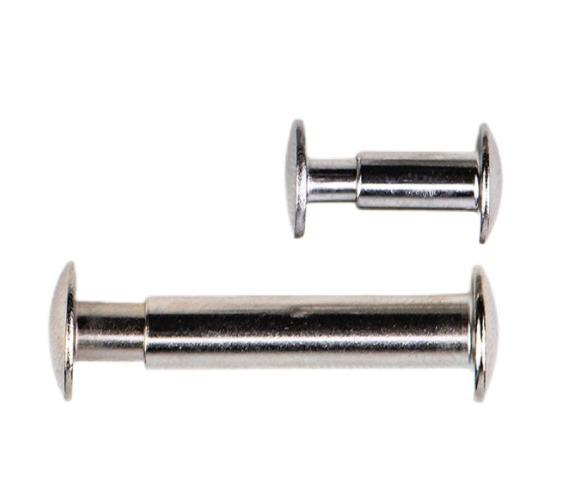
Understanding the Definition and Design of Male and Female Rivets
What are Male Rivets?
Male rivets, also known as protruding head rivets, are designed with a distinctive head that stands out from the surface of the material to which they are attached. The head’s protrusion allows the rivet to be inserted into a corresponding female rivet, creating a firm connection. The design of the male rivet includes an external shaft and a head that fits into the internal features of the female rivet.
What are Female Rivets?
Female rivets are characterized by their internal hole, which is designed to receive the male rivet. The hole in the female rivet is engineered to match the external diameter of the male rivet, ensuring a snug fit. This design is crucial for maintaining the integrity of the connection, as it allows the male rivet to pass through and securely lock into place within the female rivet.
Key Points for Matching Male and Female Rivets
1. Diameter Matching
A critical aspect of using male and female rivets is ensuring that the external diameter of the male rivet accurately matches the internal diameter of the female rivet. This precise matching is essential for the rivet to pass through the female component smoothly and establish a strong connection. If the diameters are not well-aligned, it can lead to loose fittings or misalignment, compromising the joint’s strength.
2. Design Considerations
Male rivets are often designed with a bucktail or similar feature to prevent slippage or misalignment during installation. This design helps maintain the correct position of the rivet and ensures that it remains securely in place. The internal diameter of the female rivet is usually slightly smaller than the external diameter of the male rivet, which guarantees a tight fit and prevents movement once the rivet is installed.
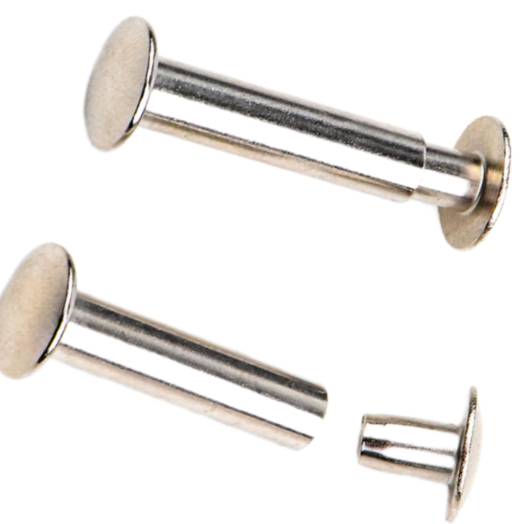
Materials and Surface Treatments for Rivets
1. Common Materials
Male and female rivets are manufactured from a variety of materials to suit different applications. Common materials include:
- Stainless Steel: Known for its strength and resistance to corrosion, stainless steel is ideal for applications in harsh environments, such as aerospace and marine industries.
- Copper: With excellent conductivity and corrosion resistance, copper rivets are commonly used in electrical components and decorative applications.
- Iron: Iron rivets offer high strength and are often used in heavy-duty applications like bridge construction and machinery.
- Aluminum: Aluminum rivets are lightweight and resistant to corrosion, making them suitable for aircraft and lightweight structures.
2. Surface Treatments
To enhance the durability and performance of rivets, various surface treatments are applied:
- Polishing: Improves the aesthetic appearance and reduces surface roughness.
- Passivation: Provides a protective layer to increase corrosion resistance.
- Galvanization: Coats the rivets with a layer of zinc to prevent rust and corrosion.
These treatments ensure that rivets maintain their integrity and functionality over time, even under challenging conditions.
Customization Services for Male and Female Rivets
The market offers a wide range of male and female rivets in various sizes and models to meet general requirements. These standard specifications cover common diameters, lengths, and head shapes to accommodate different applications.
For specialized applications, customization services are available. Customization can include:
- Different Head Shapes: Options such as countersunk, flat, or dome heads to meet specific aesthetic or functional requirements.
- Material Variations: Custom materials or alloys tailored to particular environmental conditions.
- Size Adjustments: Rivets made to non-standard sizes to fit unique design specifications.
- Surface Treatments: Tailored surface treatments to enhance performance in specific environments.
Customization ensures that rivets meet the exact needs of complex engineering projects and specialized applications.
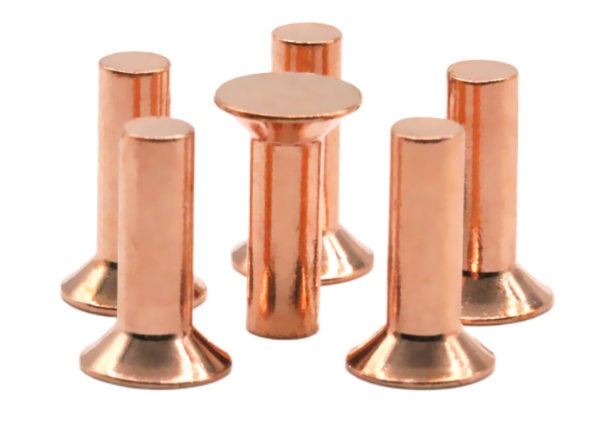
Common Applications of Male Female Rivets
Male female rivets are widely used across industries due to their unique connection. Here are detailed applications of male and female rivets in different industries as follows:
- Aerospace: In aerospace engineering, male female rivets are essential for assembling aircraft components. They are used to join critical parts such as wings, fuselage, and tail sections. The reliability of riveted connections is crucial for ensuring the safety and performance of aircraft.
- Automotive: In the automotive industry, rivets are employed in car body construction to enhance structural strength and stability while reducing weight. The use of rivets in automotive manufacturing helps improve the overall efficiency and safety of vehicles.
- Construction: Rivets are widely used in construction, particularly for joining steel structures in bridges and high-rise buildings. They provide robust connections that ensure the stability and seismic resistance of large structures.
- Shipbuilding: In shipbuilding, rivets are used to connect the hull and bottom parts of ships. This application requires rivets to offer high strength and sealing properties to withstand the marine environment.
- Machinery: In machinery manufacturing, rivets are used to assemble various components, including bearings and gears. The use of rivets ensures that mechanical devices operate smoothly and reliably.
- Electronics and Furniture: Rivets are also used in the production of electronic devices and furniture. In electronics, rivets offer reliable connections in high-temperature environments, while in furniture, they provide durable and stable assembly.
- Power Equipment and Rail Transport: Rivets play a role in the manufacturing of power equipment, such as engines and transformers, as well as in rail transport for vehicles and track connections. Their strength and reliability are critical for the performance and safety of these systems.
Why Should Choose the Right Rivet Head Shape for Different Applications?
It is crucial to choose different rivet head shapes in different application scenarios, as different head designs can provide specific mechanical properties, aesthetics, and the ability to adapt to different working environments. Here are some reasons to choose rivet head types based on application scenarios:
1. Mechanical Performance
Selecting the appropriate rivet head type is crucial for meeting mechanical performance requirements. Different head types offer varying levels of shear and tensile strength. For example, countersunk rivets provide a flush surface for aesthetic purposes and are used where a smooth finish is required. Large flat round heads, on the other hand, are suitable for applications requiring higher torque strength and resistance to pressure.
2. Environmental Adaptability
Rivet head types should be chosen based on the environmental conditions they will face. For instance, rivets with better corrosion resistance are preferred for applications exposed to moisture or harsh chemicals. Stainless steel rivets with specific head designs can offer enhanced performance in such environments.
3. Aesthetic Considerations
In applications where appearance is important, such as in automotive interiors or aerospace components, the choice of rivet head type can impact the final product’s visual appeal. Smooth, countersunk heads are often selected for a cleaner look.
4. Installation Efficiency
The design of the rivet head can affect the ease of installation. Certain head types are designed for automation in assembly lines or to simplify manual installation. For example, heads that facilitate machine grip and insertion can enhance production efficiency.
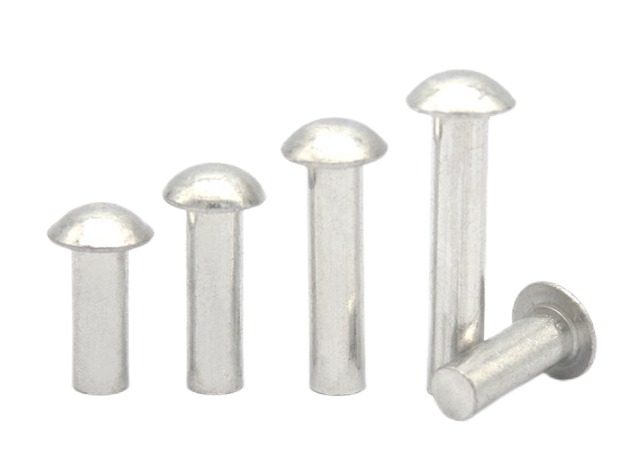
How to Choose the Rivet Head Shapes Based on Material?
When selecting the appropriate shape of the rivet head, it is necessary to consider the characteristics of the rivet material and the requirements of the application environment. The following are the guiding principles for selecting rivet heads based on different materials:
- Aluminum Rivets: Aluminum rivets are lightweight and corrosion-resistant, making them ideal for applications in aircraft and lightweight structures. Common head types for aluminum rivets include flat, round, and countersunk, providing various levels of visibility and aesthetic options.
- Iron Rivets: Iron rivets, known for their high strength, are used in heavy-duty applications such as bridges and machinery. Head types like flat and round are typically chosen based on structural requirements and visual considerations.
- Stainless Steel Rivets: Stainless steel rivets offer superior strength and corrosion resistance, suitable for marine and outdoor applications. The choice of head type for stainless steel rivets often considers factors like environmental exposure and aesthetic needs.
- Copper/Brass Rivets: Copper and brass rivets are valued for their ductility and resistance to corrosion. They are commonly used in electrical components and decorative items. Head types for these materials often include round or flat heads, matching the specific application requirements.
Understanding design, material options, standard sizes, and appropriate head types of male and female rivets is essential for selecting the right rivets for specific needs. By considering these factors, engineers and designers can ensure the integrity, durability, and performance of their projects, whether in aerospace, automotive, construction, or any other field where strong and dependable connections are required.

